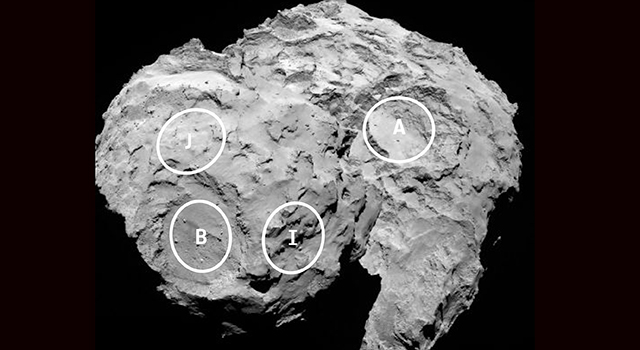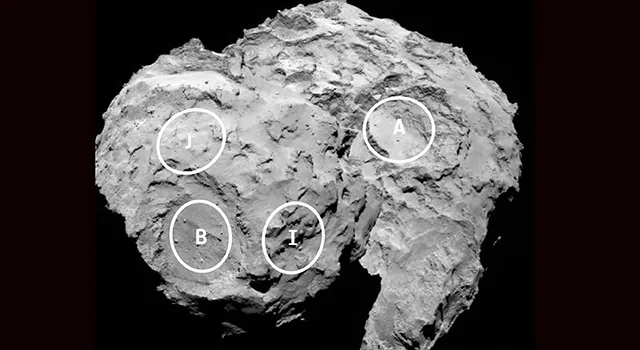European Space Agency has decided that November 12th, 2014 will be the day when the Rosetta Mission lands “Philae” the lander on the surface of the comet Churyumov-Gerasimenko or simply 67P (Remember Rosetta). If all goes well, November 12th, 2014 will be the first time in the history of mankind, a probe lands on a Comet.
Science fiction was there first though, remember the book by Greg Bear called “EON“? It sure does feel like Science fiction – Chasing Comets and landing on a probe on it! But all this for real and The Rosetta Mission is already the first mission to rendezvous with a comet, the first to follow a comet around the Sun and sent back pictures of it. It took over 10 years and 4 billion miles for Rosetta to get to Comet 67P. It had to hibernate for 957 days to accomplish all this.
The lander, Philae is equipped with a camera and will take a 360-degree panorama of the comet surface. Besides measuring the gas pressure and dust distribution at the landing site. It will also drill beneath the surface of the comet and analyze the material. Comets are considered as “pristine planetary building blocks” and all this investigations will hopefully throw more light into the history of the universe and the role that comets played in shaping life on our planet.
So where is Philae going to land?
ESA has decided to land Philae on Site J after a lot of consideration. The site has been chosen as it is relatively flat with far lesser cliffs in the terrain. But the landing is going to be anything but easy. Remember, this is a comet that is constantly rotating as well. The Comet completes a full rotation in about 12.4 hours. So when Philae is actually descending down to the surface, the landing site would be in the opposite side of the Comet! Well, this could be the most complicated landing in the history of our space programs.

Image Credit: ESA/Rosetta/MPS for OSIRIS Team MPS/UPD/LAM/IAA/SSO/INTA/UPM/DASP/IDA
At 08:35 GMT, the landing sequence will begin and Rosetta will release the lander , Philae at an altitude of 20 kilometers above the comet. Philae is expected to arrive at the surface of the comet 67P at 15:35 GMT i.e. 7 hours later. During the 7 hour descent, Philae’s ROLIS camera is set to take a series of photos of the comet. If you are interested in learning more about the site selection, read this article by NASA.
Here’s a nice video by ESA regarding the descent and science on the surface of the comet.
This is by far, the most exciting space mission in recent years. In my opinion, this is right up there with NASA’s Apollo Missions! Landing a probe on a Comet after 10 years and 4 Billion miles. Who would have thought of that! A new era in Space exploration is well underway! Rosetta Mission all geared up for Landing on the comet on 08.35 GMT, November 12th, 2014! Are you? 🙂
Reference: BBC News & UniverseToday
Did you like this post? Read more and subscribe to our monthly newsletter!






